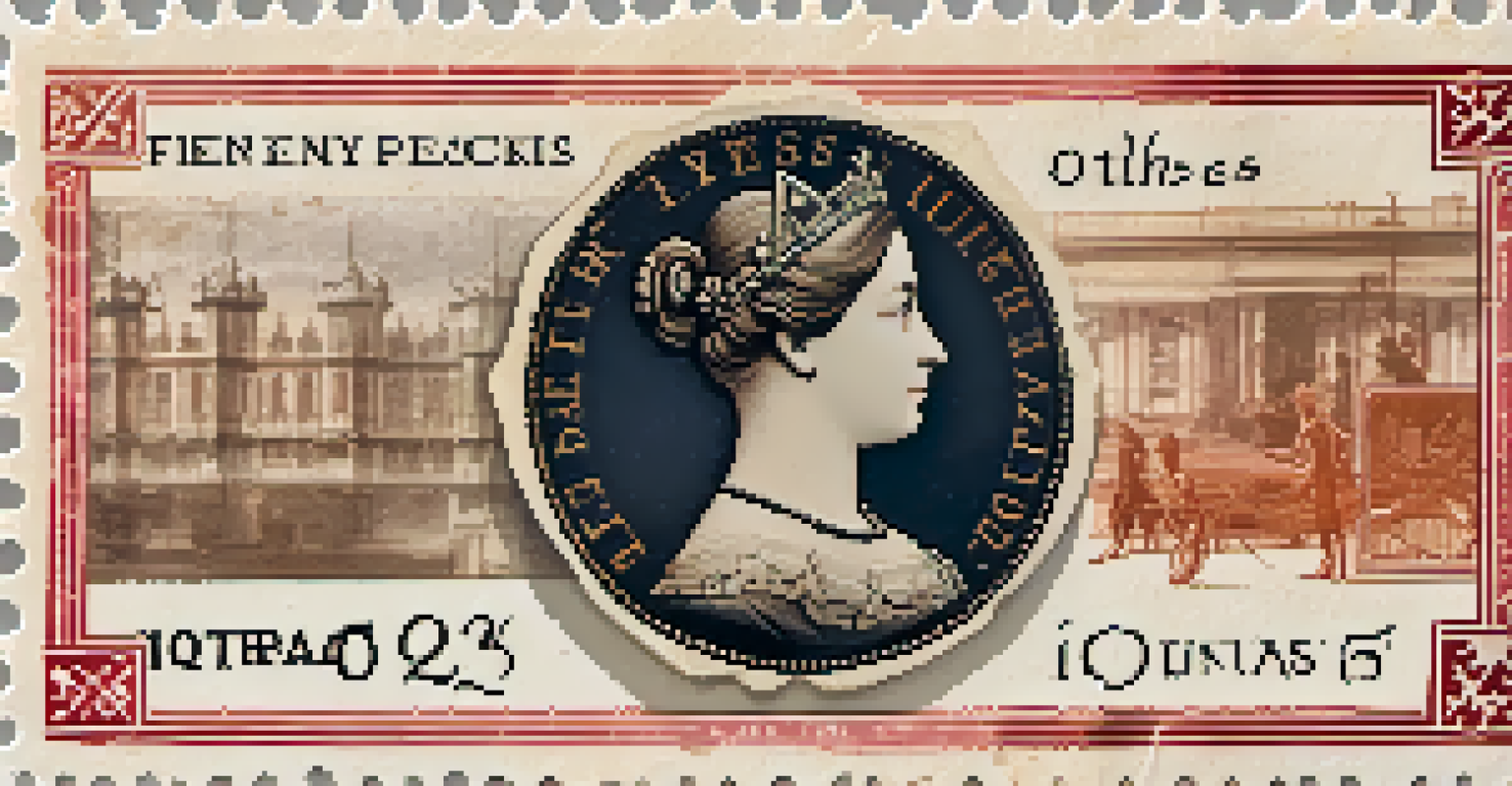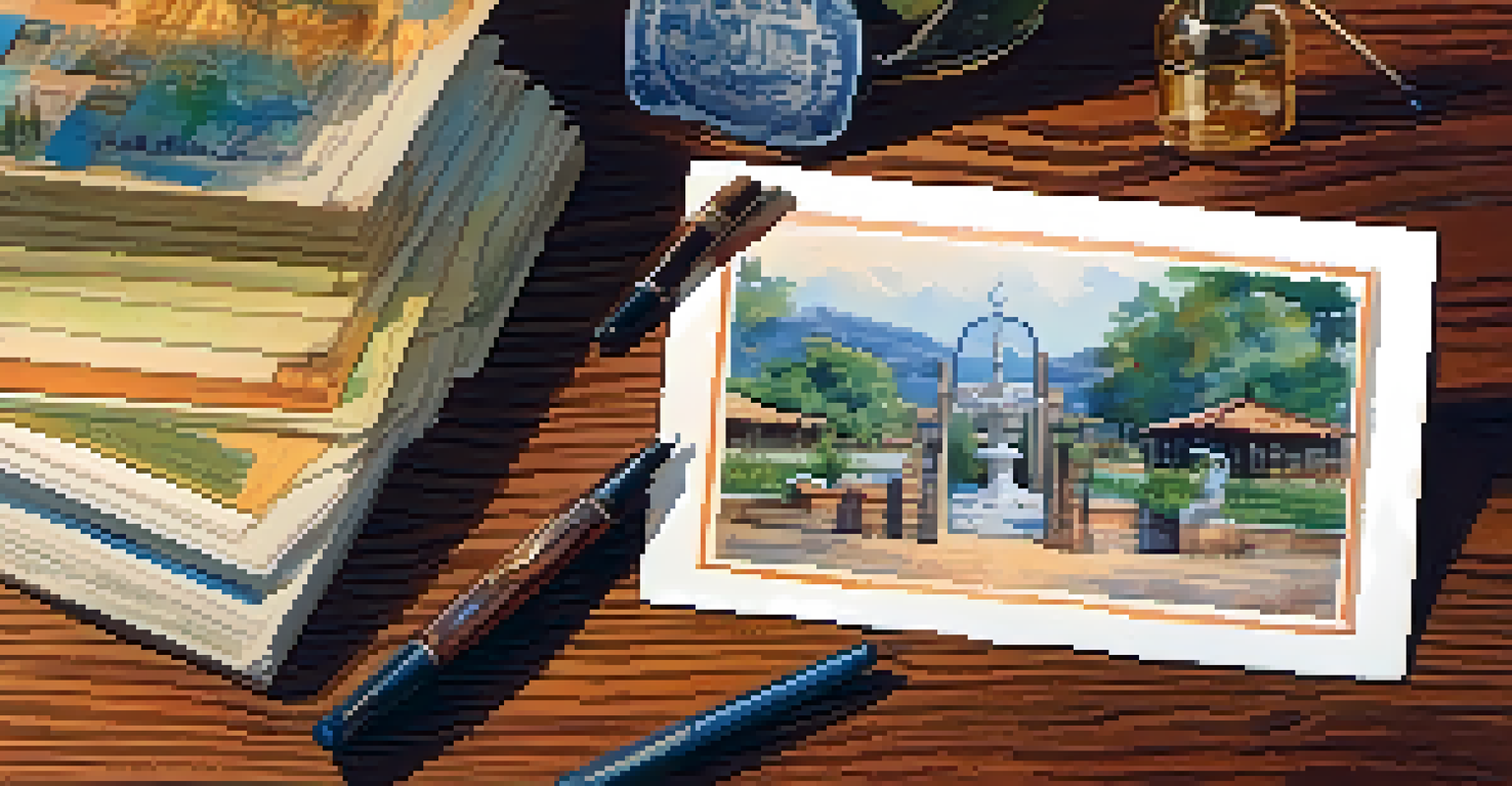Postal History: Understanding the Stories Behind Stamps

What is Postal History and Why Does It Matter?
Postal history is more than just the study of stamps; it's a fascinating glimpse into the past. It encompasses the evolution of mail systems, the design of postal markings, and the stories behind the letters that traveled across distances. By understanding postal history, we can appreciate how communication has transformed over the centuries.
The postal service is the most important service that government can provide to its citizens, as it allows them to communicate with each other and with the world.
Consider how different cultures have influenced postal systems worldwide. For instance, the introduction of the postage stamp in the 19th century revolutionized how people sent letters, making communication more accessible and efficient. This innovation not only changed personal correspondence but also impacted commerce and government functions.
Ultimately, postal history connects us to the lives of those who came before us. Each stamp tells a story, reflecting societal values, historical events, and cultural shifts. By exploring these narratives, we gain insights into the human experience that transcends time and geography.
The Birth of the Postage Stamp
The first postage stamp, the Penny Black, was introduced in the United Kingdom in 1840. This small piece of paper changed the way people thought about sending mail, as it allowed the sender to prepay for delivery. Imagine the excitement of receiving your first mail without needing to barter or negotiate costs with the postman!

The design of stamps is often reflective of the era in which they were created. For example, the Penny Black featured a profile of Queen Victoria, symbolizing both national pride and the monarchy's role in unifying the British Empire. This design choice was significant, as it highlighted the importance of identity in postal services.
Postal History Connects Us to the Past
Understanding postal history reveals how communication has evolved and reflects societal values throughout time.
As postal systems evolved, so did the designs and functions of stamps. They began to represent not just payment but also commemorate events, celebrate culture, and even promote tourism. Each stamp can be a mini time capsule, capturing the essence of a moment in history.
Stamps as Historical Narratives
Stamps often serve as visual narratives that encapsulate historical events and figures. For example, stamps commemorating the Apollo 11 moon landing in 1969 celebrate human achievement and exploration. They remind us of our collective dreams and aspirations, making history tangible and relatable.
Stamps are a small piece of art, a reflection of our culture and history, and they tell stories that resonate across generations.
Moreover, stamps can reflect social changes and movements. The introduction of women’s suffrage stamps in the early 20th century highlighted the fight for equality and the voices of women seeking representation. These stamps are more than collectibles; they are powerful statements of progress.
By collecting stamps, enthusiasts can piece together stories that might otherwise be forgotten. Each time a collector examines a stamp, they engage with a part of history, sparking curiosity about the people and events that shaped our world. It's a unique way to connect with the past.
International Postal Systems and Their Impact
Different countries have unique postal systems, each with its own set of rules, designs, and histories. For instance, the United States Postal Service has evolved from a simple courier system to a complex organization that serves millions daily. This evolution showcases the need for efficient communication in a growing nation.
International postal agreements, such as the Universal Postal Union, have facilitated global communication. These agreements ensure that letters and packages can traverse borders seamlessly, connecting people worldwide. Imagine how different our lives would be without the ability to easily send a postcard from abroad!
Stamps: Mini Time Capsules of History
Stamps serve as visual narratives that commemorate historical events and cultural shifts, making history tangible.
The impact of international postal systems is profound, fostering cultural exchange and understanding. Stamps from various countries often showcase local art, traditions, and achievements, allowing people to learn about each other's cultures. In this way, stamps act as ambassadors, bridging gaps between nations.
The Role of Stamps in War and Peace
Stamps have played a significant role during times of war, often serving as tools for propaganda or morale-boosting. For example, stamps issued during World War II featured patriotic imagery and messages, encouraging citizens to support the war effort. These stamps became symbols of resilience and national pride.
Conversely, stamps can also represent peace and reconciliation. After conflicts, countries may issue stamps that symbolize unity and healing. The creation of stamps commemorating peace treaties serves as a reminder of the importance of dialogue and cooperation in building a better future.
Through their imagery and messaging, stamps have the power to influence public sentiment. They can rally citizens to action or inspire hope for a brighter tomorrow. Each stamp created during these times carries a weight of history, embodying the struggles and triumphs of humanity.
The Artistry Behind Stamp Design
Stamp design is an art form that combines creativity with cultural representation. Designers often draw inspiration from historical events, famous personalities, and national symbols. This fusion of art and purpose makes stamps not only functional but also aesthetically pleasing.
Consider the intricacies involved in designing a stamp. Artists must balance visual appeal with the need to convey a message succinctly. For instance, a stamp commemorating a national holiday might incorporate traditional colors and motifs, allowing it to resonate with the public.
Stamp Collecting Builds Community
Philately fosters connections among enthusiasts, creating a community that shares knowledge and preserves history.
As technology advances, stamp design continues to evolve. Digital design tools enable artists to experiment with new styles and techniques, expanding the possibilities of what a stamp can represent. This ongoing innovation keeps postal history alive, ensuring that each new stamp tells a fresh story.
Collecting Stamps: A Window into History
Stamp collecting, or philately, offers enthusiasts a unique opportunity to explore history through tangible items. Collectors often find joy in uncovering rare stamps, learning about their origins, and understanding the stories they tell. It's a hobby that combines passion with education.
For many, the thrill of the hunt is what makes collecting stamps so rewarding. Each find can lead to a deeper understanding of historical events and cultural shifts. Imagine stumbling upon a stamp that commemorates a significant event in your country's history—suddenly, you're part of that narrative.

Moreover, stamp collecting fosters a sense of community. Enthusiasts often gather at expos, share their collections, and discuss the historical significance of their stamps. In this way, collecting not only preserves history but also connects people across generations and cultures.